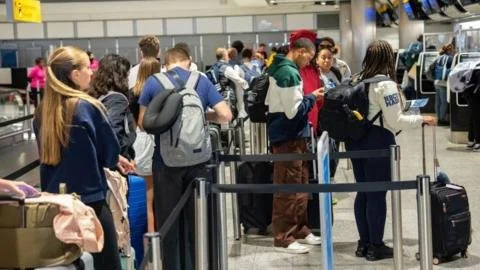When 20 Minutes of Chaos Grounded Britain: The Air Traffic Control Outage Explained
An unexpected air traffic control outage in the UK created significant disruption across airports on a typically busy travel day. Lasting only 20 minutes, the incident led to 150 flight cancellations and continued delays, raising serious concerns about the reliability of the National Air Traffic Services (NATS). The fault, identified as a ”radar-related issue”, affected the radar display system in NATS’ control center in Swanwick. Despite swift action to switch to a backup system, the outage mirrored issues faced in August 2023, which had severely disrupted air travel for over 700,000 passengers.
Transport Secretary Heidi Alexander reported NATS’ reassurances that this outage was an isolated event, with no evidence linking it to a cyber attack. However, criticism from airlines was swift, with Ryanair demanding the resignation of NATS chief executive Martin Rolfe and EasyJet expressing disappointment over repeated failures.
Experts like Graham Lake, a former head of the Civil Air Navigation Services Organisation (CANSO), explain that a loss of radar coverage essentially transforms busy airways into ”country lanes”, severely hampering air traffic management. This incident highlights the vulnerability of air traffic infrastructure, especially during peak travel times.
While some industry analysts defend NATS’ overall performance as better compared to global standards, others argue against accepting technical failures as inevitable. Doug Maclean, an air traffic consultant, suggested that NATS should provide clearer and more transparent explanations for such outages. Amidst growing concerns about capacity and reliability—especially as Heathrow and other major airports face increasing congestion—there are calls for expanding facilities in the south east of England. Although the UK government supports expansion plans, environmental critics raise alarm over potential increases in emissions and pollution. Overall, this situation underscores the fragility of national air traffic management systems during critical periods.

